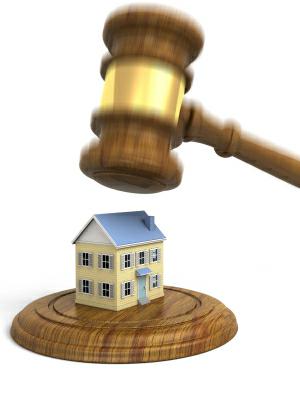A finalized divorce may not be enough to protect you from marital debts. Just because a divorce decree states that your ex will “hold you harmless’ from a creditor does not mean that the creditor can no longer attempt to collect from you.
The division of property in a divorce is called property division. Often, one party gets an upside down house in exchange for not being ‘liable’ for a different debt. Each party is ordered to pay their allocated debts and to ‘hold harmless’ the other party. This order is enforceable in county court as a “Contempt Action” and can give such remedies as court fines, attorney’s fees and even imprisonment, but it can’t remove your name from that debt. Because your name is still on the debt, the creditor can attempt to collect from you if your ex stops paying. The most common ways to remove your name from a debt is to have the collateral refinanced or to remove your personal liability by bankrupting on the debt.
When the ex-spouse gets the home they often don’t have sufficient income to refinance. They often didn’t have sufficient income to refinance because they didn’t have sufficient income to make the payments on their own. Eventually, they get to the point of foreclosure or bankruptcy- sometimes without the other party’s knowledge. Many debtors don’t get notice of their ex’s non-payment until the house is in serious arrears. When this happens, they have the option of suing their ex for contempt, but even the threat of imprisonment will rarely solve the problem because you cannot get blood from a stone.
Because home mortgages often extend as long as thirty years, the risk of liability continues for a long duration. In these cases, a house left unpaid for decades after a divorce can still fall upon the credit of an otherwise innocent ex who simply wishes to move on with their life. When this happens the only ways to avoid foreclosure are often paying off the note in full or bankruptcy.
Continue reading →
 Your Jacksonville home has a sale date. You’ve been holding off on filing bankruptcy because you thought a mortgage modification might be possible and now you have 24 hours before your home is going to be sold. If you think that nothing can be done to stop it, you’re wrong.
Your Jacksonville home has a sale date. You’ve been holding off on filing bankruptcy because you thought a mortgage modification might be possible and now you have 24 hours before your home is going to be sold. If you think that nothing can be done to stop it, you’re wrong. Jacksonville Bankruptcy Lawyer Blog
Jacksonville Bankruptcy Lawyer Blog



 As you may be aware, the L.A. Dogers filed for Chapter 11 bankruptcy protection in late June of this year. Chapter 11 is a reorganization bankruptcy available to both individuals and businesses where the creditors get to vote on whether or not to approve your proposed repayment plan.
As you may be aware, the L.A. Dogers filed for Chapter 11 bankruptcy protection in late June of this year. Chapter 11 is a reorganization bankruptcy available to both individuals and businesses where the creditors get to vote on whether or not to approve your proposed repayment plan.